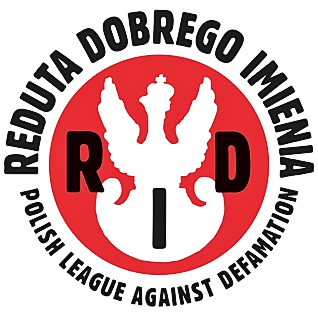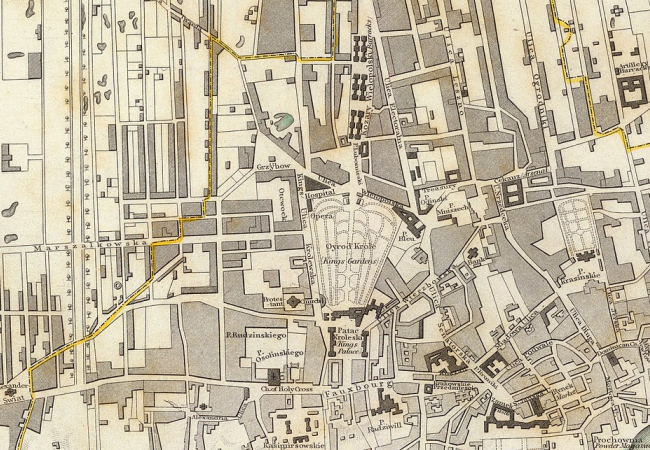The Warsaw Uprising, also known as the Warsaw Insurrection, broke out in 1794 as an armed protest against the Russian occupation of the city during the Kosciuszko Uprising. It began on April 17, after Tadeusz Kosciuszko’s victory at the Battle of Raclawice, and aimed to liberate Warsaw from Russian domination.
Preparations for the insurrection had been underway since late 1793, when key leaders such as Ignacy Dzialynski and Tomasz Maruszewski, who was Tadeusz Kosciuszko’s envoy, convinced both Polish army units and civilians affiliated with the militia arrangements to the idea.
Although the Russians tried to counteract the outbreak of the uprising through arrests and surveillance, they failed to effectively secure the city and street fighting broke out anyway, encompassing all of Warsaw. Despite the considerable superiority of the Russian garrison, the Poles managed to surprise and disperse them. Thanks to determination and strategy, the Polish victory covered the entire country, becoming the biggest success of the Kosciuszko insurrection.
The insurrection was the completion of the Kosciuszko Uprising, which is why it was considered the greatest military success. The victory was possible not only due to the commitment of Polish patriots, but also contributed to it by Igelström’s strategy, which greatly favoured the Poles. After all, he had already reduced the Russian garrison of Warsaw, but he also deployed his troops in such an unfortunate manner that they managed to separate and defeat them one by one. In addition, the Russians were unable to secure their weapons well, which enabled Polish civilians to capture them and then fire on their own troops with enemy weapons.
General Khrushchev’s plan to intercept Kosciuszko’s troops and stop them from approaching the capital also failed, as did increased surveillance of Kosciuszko’s potential supporters and the introduction of censorship of all mail entering or leaving the city. At the same time, Russian forces remaining in the city began preparations for the pre-emptive disarmament of the weak Polish garrison of Warsaw. The key was to be the seizure of the Royal Arsenal on Miodowa Street. Russian attempts to counteract the outbreak of the expected uprising in the city not only failed to produce results, but actually further inflamed the atmosphere, as they were reported to the Polish leadership.
Despite the many arrests of Polish generals (Antoni Józef Madaliński, Kazimierz Nestor Sapieha and Ignacy Józef Działyński, Sejm Speaker Stanisław Małachowski, Ignacy and Stanisław Kostka Potocki and Hugo Kołłątaj), the Polish side was not sufficiently weakened, preparing in parallel to strike at the Russian garrison of the city.
Bishop Joseph Kossakovsky, known for his pro-Russian sympathies, had a significant impact on accelerating the fighting. He proposed that Russian troops surround the churches and capture all the troublemakers during the Easter celebrations falling on April 19. When the Polish conspirators discovered the bishop’s plan, it was decided to speed up preparations and begin armed action immediately. On Holy Wednesday, the Polish garrison of the city secretly collected gunpowder charges and ammunition, and during the night Polish units were deployed at strategic points in the city, contrary to the division previously agreed upon with the Russians. Russian commanders were aware of the preparations for the uprising and their troops were also issued additional ammunition.
At 03:30 at night, about twenty Polish dragoons left the Mirowskie Barracks and headed toward the Saxon Garden, where they captured Russian guns. Shortly thereafter, the rest of the Horse Guards Regiment left the barracks and divided into two groups: one moved toward the Wolski turnpikes, and the other headed toward the Arsenal, where Russian units were preparing to forcibly receive weapons and ammunition. At the same time, the Arsenal garrison was joined by a small detachment of pontoniers and hurried National Cavalry under the command of Colonel Jan Jerzy Giessler, who had crossed the Vistula earlier in the day.
During the insurrection, fierce battles were waged for control of the Royal Arsenal. At 05:00 the assault on the Arsenal, previously planned by the Russians, began, but unexpected resistance from the prepared Polish defenders led to the rapid collapse of the assault. Soon after the first shots were fired, the Arsenal crew also began distributing weapons and ammunition to willing Warsaw residents, an increasing number of whom gathered in the area and bolstered the ranks of the defenders. The Arsenal’s defense thwarted the Russians’ plans, but the Poles’ plan to surprise the Russian soldiers in the city streets, rather than in their barracks or resistance points, also failed. In view of this, smaller detachments set out from under the Arsenal with the task of liquidating the Russian outposts they encountered before the Russian command was fully aware of the size of the uprising. One such unit, armed with two cannons, broke through the Old Town to Krasinski Square, while two other groups set out along Dluga Street. Their actions spread the news of the uprising throughout the city. By 06:30 regular Polish troops were fighting the Russian army in Nalewki and Kłopot streets. At Bonifraterska Street, around 07:00, Major Vasyl Titov’s battalion was attacked by the Foot Guard, and although it defended itself for four hours, it eventually withdrew with the rest of its men to Powązki under the protection of the Prussian troops stationed there. Heavy fighting also ensued at Leszno, where at the foot of the Carmelite Church the Russians suffered heavy losses. Eventually, after several hours of fierce fighting, most of the Russian privates who fought there surrendered to captivity, and officers who wanted to continue the fight were slaughtered.
During the night of April 17-18, fighting continued in various parts of the city, but with varying strength. Poles stormed isolated points of resistance, while Russians tried to get outside the city limits. In the early morning of April 18, Gen. Stanislaw Mokronowski, who was given the role of commander-in-chief at the end of the first day of fighting, gave the order to resume attacks on the main resistance point on Miodowa Street. Polish regular army units, supported by militias and composed of armed civilians, repeatedly launched assaults on the Mlodziejowski Palace courtyard. Despite bloody clashes, all attacks were repulsed, but the Russians also suffered heavy losses, especially from constant shelling by partisans positioned in windows and on roofs of nearby houses.
By the morning, the area controlled by Igelström’s troops mainly included the quarter bounded by Dluga and Miodowa Streets, Krasinski Palace and the surrounding garden. The Russian commander himself came to the conclusion that it no longer made sense to continue defending the ruined embassy building. Along with a group of 400 appendages, he withdrew to Krasinski Palace. From there he planned to break through outside the city, but all the surrounding streets were blocked by Polish infantry and artillery. Realizing that he had lost communication with most of his forces and the rest were entrenched, Igelström delivered the surrender at 10:00 am.
After Mokronowski accepted the armistice, Igelström broke the terms and fled the besieged quarter to the Prussian camp at Powazki, and from there continued to Karczew. It is not known exactly how many soldiers he managed to get out thanks to this foray, but most estimates put the number at around 400 men and 8 troops. After realizing that the Russian commander had disappeared, the Poles resumed their attack on the Russian positions. The remaining Russian troops in the embassy ruins eventually ran out of ammunition, and by late afternoon Kalinowski’s 10th Regiment, supported by militia led by Kilinsky, had driven the last defenders out of the quarter.
During the last day of fighting in Miodowa Street, led by Jan Kilinski, who stood at the head of the people, Colonel Parfenev, among others, was taken prisoner, and political prisoners illegally held there were found in the basement under the Russian embassy. The insurgents seized the embassy’s secret archive, which contained details of all Russian operations in Polish lands since 1763. Among the documents was a register of Polish officials in Russian pay, many of whom were later executed.
The capture of the embassy was the culmination of the insurrection’s success. All Russian forces were defeated or forced to flee, and by the end of the day the last points of Russian resistance had capitulated. By the evening of April 18, for the first time in many decades, Warsaw was free of Russian influence.

